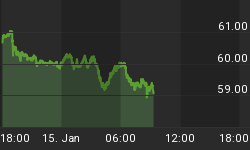There are many reasons to be scared of the financial system in Europe. The interweaving of sovereign risk and inter-sovereign risk with bank guarantees and the symbiosis in which countries guarantee (implicitly or implicitly) banks which then buy sovereign paper that is not considered a risk asset is enough to make anyone who looks closely pretty queasy. If Portuguese banks fail, what effect does that have on Spanish banks, or on the Europe-wide guarantee facilities? Is anyone even somewhat confident that they know?
However, with all of the reasons to fear a resurgence of the European banking crisis, the manufactured "underfunding" story is not one of them. According to the Financial Times, "Europe's biggest banks will have to cut €661bn of assets and generate €47bn of fresh capital over the next five years to comply with forthcoming regulations aimed at reducing the likelihood of another taxpayer funded bailout."
Those are big numbers, and scary, but ... what do they mean? Do they mean that banks are underfunded by that amount?
Well, the numbers only mean that if somehow the Basel III requirement is magically the "right" number. And even then, I am not sure what it means to have the "right" number. If you have trouble driving your Cadillac on a country road, and it leads you to design a car with a higher clearance, how do you know you have the "right" clearance? It sort of depends on the road, doesn't it? If the road is smooth, then you'll be too high, but if the road is too rough, your higher clearance might not be high enough. Without seeing the road, all you can do is guess at the trade-off between the cost of the higher clearance, and the benefits of the higher clearance.
And we have no idea what the road ahead looks like in Europe, or anywhere else for that matter. So declaring a certain "clearance" as being the "right" clearance is presumptuous. Sure, we now know that roads can get bumpy even when central banks are trying to smooth them (and in some cases because they are trying to smooth them), so we think we need more clearance...but how much more? Never mind the fact that this isn't as straightforward as measuring a car's undercarriage clearance - if a rule can be written into Basel III, it can be engineered around by a bank. (That's why we didn't stop at Basel I.)
In general, I am skeptical that the right answer is reached by central banks, or even worse an international committee of central banks such as the BIS, sitting around in a room with a lot of smart economists counting angels on the head of a pin. Not that Jamie Dimon showed great risk acumen in allowing the London Whale to lose six billion bucks, but at least he makes decisions on risk on a regular basis instead of at annual banker meetings where there are presentations on how to tell a CDS from a CMO.
We clearly need to consider how to increase incentives for bank management and shareholders to capitalize banks correctly, where "correctly" means that the shareholders and stakeholders are taking the amount of risk they feel comfortable with, and that there are no unpriced externalities. It is this latter problem that is the issue, of course; a free government guarantee is simply value that bank management seized for themselves. It allows any bank to take more risk than they would if it was their own money. But limiting risk, or raising the "insurance" premium, just raises the clearance of the car. What we need, if banks are large enough to pose systemic risks, is a way to make the costs of poor risk decisions assessable in retrospect rather than in prospect. That is, remove the corporate veil for banking licenses. Require all banks to have a general partner or partnership group which has unlimited liability.
Here is what would happen in such a case. Small banks would have a general partner who would secure liability insurance (possibly paid for by the bank shareholders). Larger banks would find it more difficult and expensive to secure that insurance in amounts that completely covered the possible losses for the general partner, which would mean that the biggest banks would likely choose to break into smaller banks. And what is wrong with that? One of the solutions that has been put forth is to have banks sell off assets. Splintering into a number of smaller banks is the same as selling off all of the assets.
And then, you wouldn't need implicit or explicit government guarantees (although deposit insurance might best be provided by, or backstopped by, a government entity). There's already someone to go to in order to cover the losses: the general partner, or the insurer, or the reinsurer. Together with derivative clearing arrangements, a system built from smaller and redundant parts would likely be much more resilient than one built with just a few critical "TBTF" parts.
















